
Enterprise resource planning and customer relationship management with open source
Big Business
The complex business processes in a modern enterprise, from procurement through receipt of incoming goods, the flow of goods through production, and the delivery of goods to customers, are almost unmanageable today without the support of powerful enterprise resource planning (ERP) and customer relationship management (CRM) solutions. A robust and flexible ERP/CRM system is vital for a modern company.
Proprietary or Open Source
According to a survey by Panorama Consulting Solutions, the three leading providers of proprietary ERP software – SAP, Oracle, and Microsoft (the so-called Tier I suppliers) – currently have a combined market share of 54 percent. All Tier II suppliers (which include less complex solutions with a comprehensive range of functions, such as Infor and Epicor) had to settle for a total market share of 14 percent last year.
The rest of the market contenders – the Tier III providers – still account for a significant 31 percent cut of the cake. Tier III providers include industry-specific solutions that are tailored vertically and therefore can provide powerful functionality with minimal adjustments.
Proprietary ERP solutions admittedly have some benefits. ERP systems by the Tier I providers (SAP, Oracle, and Microsoft) score points with their sophisticated group-specific functionality, such as the ability to manage geographically dispersed sites in different countries in different languages and to model complex business processes in various industries. However, these group-specific features are mainly useful for large international companies and are not always beneficial to small and medium-sized businesses. The low added value of these features outside of large corporations is disproportionate to the considerable costs of implementing a Tier I solution. According to Panorama Consulting, these costs range in the single- to double-digit millions.
In addition to the high cost for a proprietary solution, users must contend with the problem of being locked in to a single vendor. The inflexibility and high cost of proprietary ERP/CRM tools has caused many companies to look for open source alternatives.
Open source ERP solutions offer two key advantages. For one thing, the company can take an open source solution for a test drive at virtually no cost to check in depth its suitability for enterprise needs. Additionally, users are free to modify the open source ERP system. The stronger the open source community of experienced developers, the easier the task. Many service providers now specialize in providing customized open source ERP software to small and medium enterprises (SMEs).
The Open Source Alternative
Open source ERP/CRM solutions are many and varied. Some are turnkey; others must be adapted. Some score points with powerful modules, and others with numerous experienced system integrators. Given that implementation of a CRM system can take up to two years to complete, it is not surprising that finding the perfect solution places an enormous burden on IT managers.
The evaluation of a CRM system begins with creating a requirements profile that maps all the relevant processes. The intent is to examine how to retrofit missing functionality or possibly add that functionality by integrating software packages, such as loadable modules, by different vendors. More or less any ERP system will do a satisfactory job of handling the standard functions (purchase order, goods receipt, invoice verification, etc.). Features for further automation of business processes, such as automatic data acquisition from suppliers, can further increase the practical benefits if they are implemented correctly and completely.
Exporters often face special requirements. Export declarations within the European Union have been regulated for over a decade by ATLAS (Automated Tariff and Local Customs Clearance System). The formalities basically involve filling out a form. Nevertheless, very few proprietary ERP systems, such as SAP ERP, can offer active support for ATLAS. However, whether these features justify the investment costs in an individual case is another matter. Many companies are willing to retrofit missing functionality.
The market for ERP solutions, especially in the upper price sector, is now clearly saturated. Although large companies have at least partly covered their needs, ERP software is still new territory for smaller businesses. Open source ERP software solutions come in many shapes and forms. Some systems are available only as a download for on-premises or cloud installations for which integrator support is available.
In this article, we highlight some popular open source ERP and CRM alternatives.
Apache OFBiz
Strengths:
- Thin client solution allows hosting as a cost-effective solution
- Supports open source and commercial databases
- Supported operating systems: Linux, Unix, and Windows
- Large user community
- Extensive documentation
Weaknesses:
- The point of sale (POS) module is relatively immature
- Installation is extremely cumbersome
Apache OFBiz (short for Apache Open For Business Project [1]) is an automation framework implemented in Java and a suite of individual enterprise applications for various business tasks of the Apache Software Foundation. It includes an open source implementation of ERP, CRM, e-business/e-commerce, supply chain management (SCM), manufacturing resources planning (MRP), computerized maintenance management system/enterprise asset management (CMMS/EAM), POS, and other tools. The individual applications use a shared data model and shared process components.
Apache OFBiz can be modified without restriction; thus, it can be connected to external proprietary systems. After the (quite complicated) installation of Apache OFBiz on a Java platform, you can manage the system in your web browser (Figure 1).
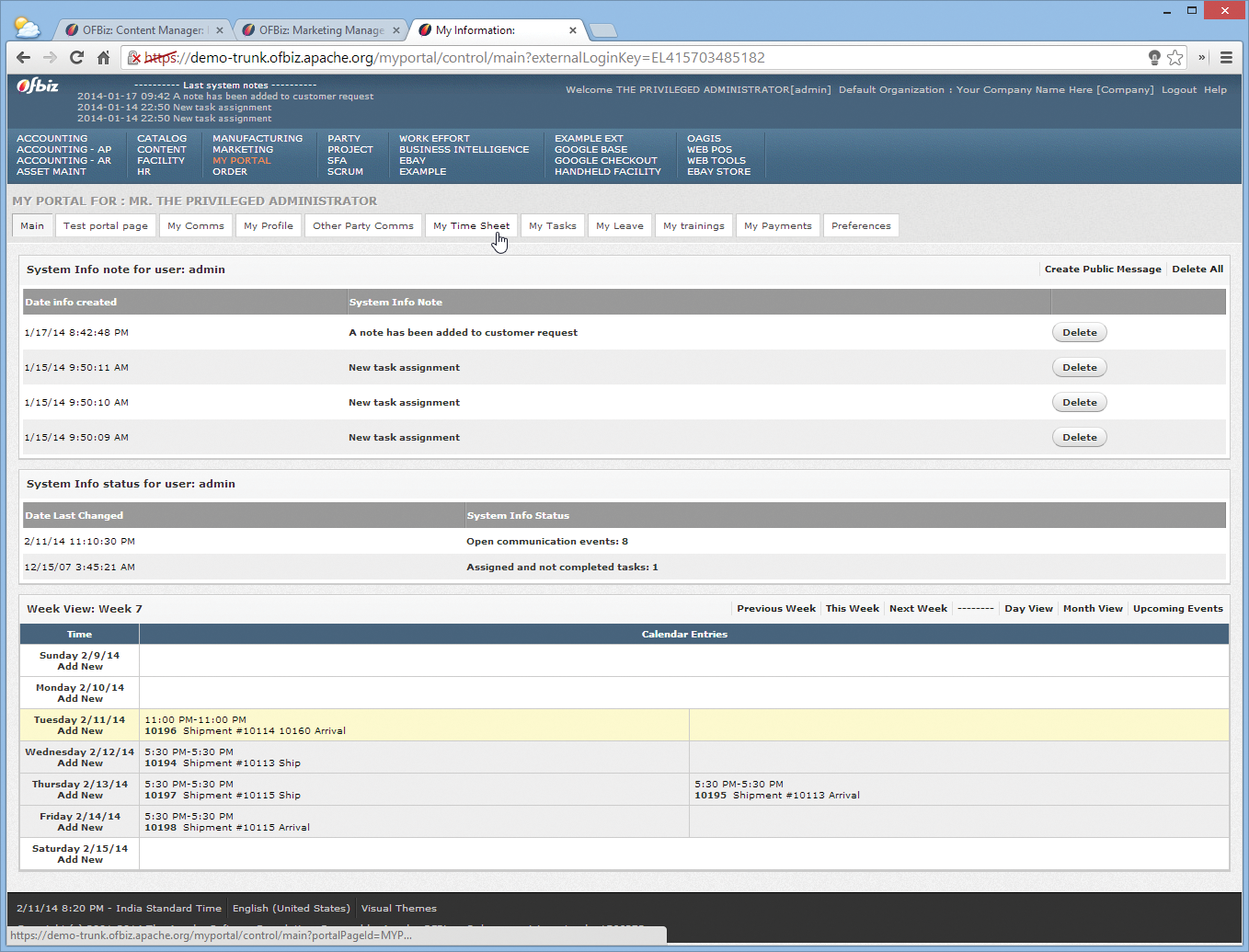
The solution impresses with remarkable adaptability. This property and the availability of specialized integrators has helped the framework attract an array of global users, including Germany's Horse123 Europe UG, the Web.de Internet portal (in cooperation with ilscipio GmbH), and PartnerHomes.com (the implementation was done in-house, without a system integrator).
OFBiz cooperates with, among others, MySQL, PostgreSQL, Oracle, Sybase, MS SQL Server, and IBM DB2. The OFBiz distribution includes Apache Derby, an open source Java database that runs on IBM Cloudscape and offers compatibility with DB2. You can see from SugarCRM what this freedom is worth. SugarCRM only offers support for Oracle and IBM DB2 in the commercial Enterprise edition.
Paul Piper, a Managing Director of ilscipio GmbH, confirms that Apache OFBiz offers "extraordinary performance and scalability" and refers to the system as "a hidden gem among enterprise-class ERP systems." Specializing in OFBiz, ilscipio GmbH received the Innovation Award from "Initiative Mittelstand" (SME Initiative) in 2012 and was also responsible for implementing OFBiz at Web.de.
Opentaps ERP + CRM
URL: http://opentaps.org
Strengths:
- Combines Apache OFBiz with an object-oriented, domain-driven architecture based on Java J2EE
- Offers authentication via LDAP and Kerberos SSO
- Supports SSL, OWASP, and data encryption
- Enables the design of ETL (Extract, Transform, and Load) operations with graphical tools
- Cooperation with all the leading databases, including MySQL (including opentaps Analytics), PostgreSQL, Oracle, and SQL Server
- Preconfigured AMIs for use in the AWS (Amazon Web Services) cloud
Weaknesses:
- Opentaps Analytics uses a data warehouse based on MySQL, even if it manages the ERP data in a different database
Opentaps, short for Open Source Enterprise Applications Suite, is an integrated ERP solution with a full CRM feature set including warehouse and inventory management, supply chain, finance, business intelligence, e-commerce, POS, and mobility (Figure 2).
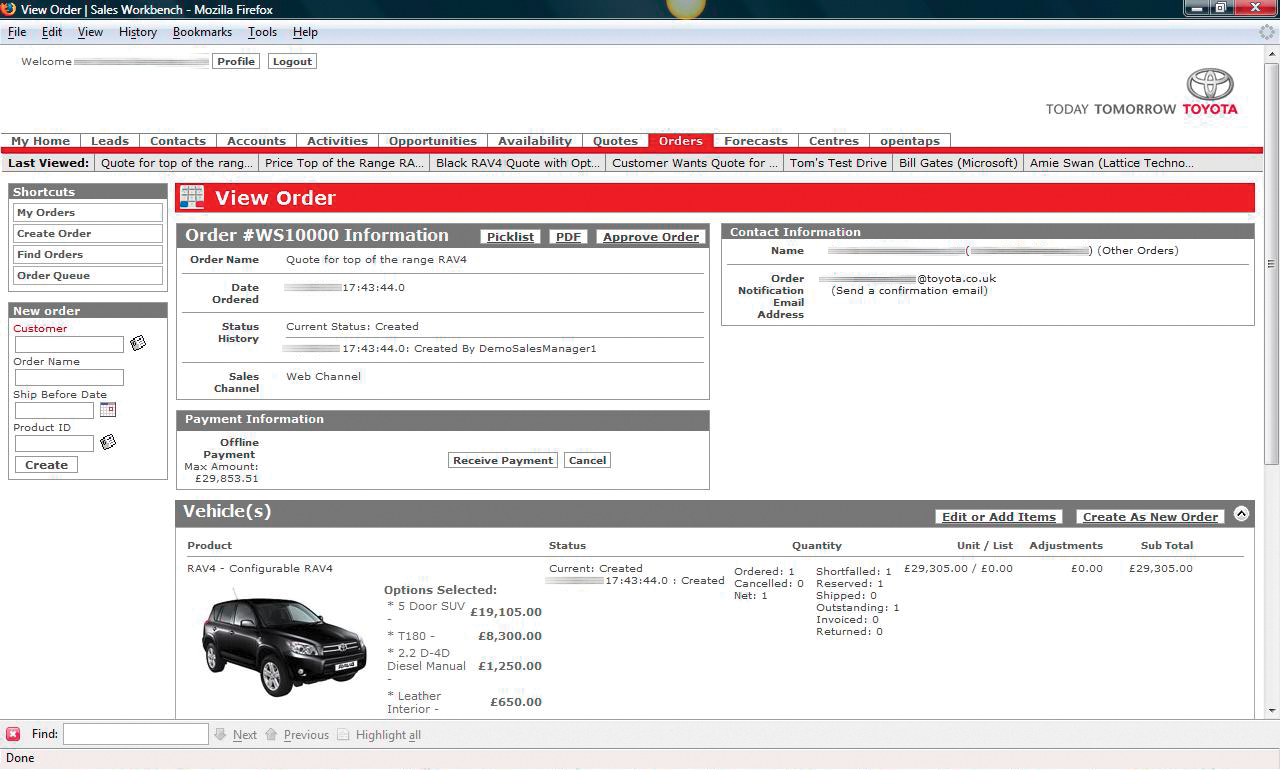
Opentaps was originally launched as a module for Apache OFBiz with the aim of expanding the functionality of the open source framework to include an ERP/CRM suite. Opentaps combines Apache OFBiz with an object-oriented, domain-driven architecture based on Java J2EE. Current versions of opentaps include Apache OFBiz, as well as the Apache Tomcat and Apache Geronimo servers.
The particular advantages of opentaps compared with Apache OFBiz include functions related to user authentication (using LDAP and Kerberos SSO), data security (SSL support, OWASP, and the encryption of critical company data), and accounting. Opentaps also impresses with sophisticated functionality in the fields of customer service/CRM, order management, inventory, procurement, planning, budgeting, and finance. Last but not least, the opentaps user interface offers significantly better usability than the OFBiz framework.
The now very popular opentaps ERP/CRM software also comes with many well-thought-out features. For example, parts of production can be outsourced in the short term to external manufacturing contractors in case of unpredictable resource bottlenecks – in the scope of multistage manufacturing processes.
Thankfully, the developers of opentaps have not attempted to reinvent the wheel. In the area of business intelligence, opentaps relies on the also open source Pentaho system and the open source JasperReports software for reporting. Reports can be designed with iReport – a JasperReports graphical tool – in a very intuitive way and then opened in opentaps and executed from there.
Integration with Pentaho allows data from various sources, including Hadoop and NoSQL databases, to be loaded into a data warehouse system. Support for the data integration system by Pentaho allows the purely visual design of ETL database operations. The user can then save the visually created transformations and run them in opentaps.
IT administrators can try out opentaps by launching an opentaps AMI (Amazon Machine Image, a preconfigured template of an executable EC2 instance) in AWS. There are currently two official AMIs:
- An opentaps mini-AMI with functionality for small deployments with up to 10 users (not suitable for e-commerce or MRP inventory planning) at a price of US$ 0.25 per instance and hour.
- An opentaps full AMI with a full installation at a price of US$ 0.50 per instance and hour.
Unfortunately, the AMIs could not be found on the AWS Marketplace; instead, direct links to the vendor's site take you there [2].
Both AMIs offer a preinstalled opentaps environment with a MySQL database preconfigured for production use. To facilitate creating your own company, the installation comes with a turnkey template that does not include any company-specific data. In this way, companies can take the system for a test drive for very little expense and investigate it in detail with regard to their own needs. For permanent use, however, the use of reserved EC2 instances is recommended to reduce operating costs.
Despite its many strengths, opentaps is perhaps not everyone's darling. If you want flexibility to choose the individual components of the system yourself, you are better served by Apache OFBiz. If you are looking for a powerful CMS system, you might be better served with a combination of Apache OFBiz and Magnolia CMS instead of opentaps.
ERP5
URL: http://erp5.com
Strengths:
- Unique ERP workflow options
- Mature internationalization
- Easy data extraction using OLAP
- Support for data warehousing
- Various vertical market solutions
- Operation via web browser
Weaknesses:
- Only poor and incomplete documentation available
- Stagnation in the evolution of ERP5
ERP5 is a popular middle-market solution that covers all the typical functional areas of an ERP system, from sales, inventory management, salary calculation, personnel management, product design management (PDM), CRM, and e-commerce through accounting. ERP5 also provides some customized, integrated solutions for markets such as aerospace, fashion, and banking. In particular, the solution scores points in the healthcare and public administration sectors (Figure 3).
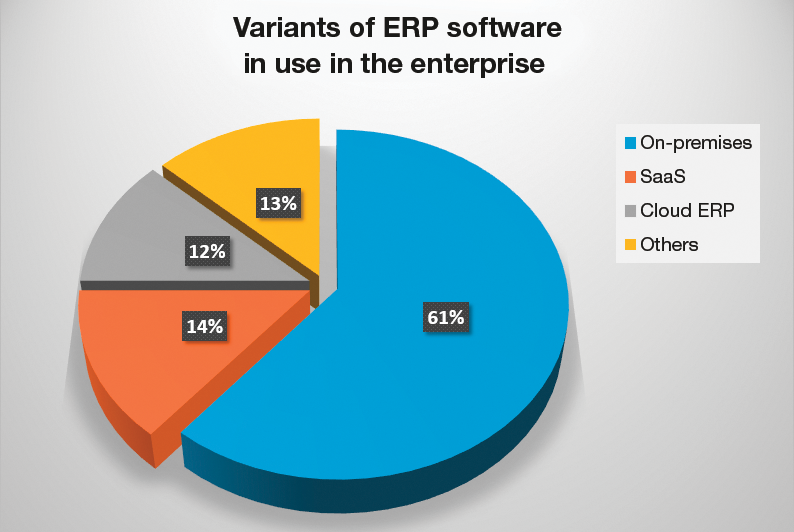
The system, which was developed in Python, uses the Zope application server as its base on Linux, Windows, OS X, and other Unix derivatives. Connectors to relational databases include MySQL, Postgres, SQL Server, IBM DB2, and Oracle.
However, a weakness exists that is not to be underestimated and that has raised concerns among many users: the clear stagnation in the evolution of ERP5. Although nothing is technically wrong with ERP5, enterprise users rightly expect a solution to be future-proof, and ERP5 cannot offer this, despite all of its features.
Compiere
URL: http://compiere.com
Strengths:
- Long-term leader in the field of open source ERP solutions
- International sales channels
- Model-driven architecture keeps company-specific adjustments when installing updates
- Platform-independent, thanks to Java base
Weaknesses:
- Only supports two database engines (Oracle Standard Edition/Enterprise Edition/XE and the Postgres Plus Advanced Server/EnterpriseDB editions)
- AMIs with Compiere currently cannot be found on the AWS marketplace
- Some localizations not operational
- Use of mobile user agent requires the Enterprise Edition
Compiere is a fairly ancient, enterprise-class, open source ERP software. Compiere was written by Jörg Janke and Kathy Pink. Compiere's model-driven architecture (MDA) was a unique feature of this solution for a while and is one of its strengths from the administrator's point of view even today. Thanks to MDA, the system administrator can modify the table structure of the relational database, add optional validation rules, and enter data without writing procedural code or dealing with SQL syntax.
The MDA architecture supports storing data structures, form appearance settings, and business logic references in a user-specific database. Compiere stores minor adjustments (e.g., parameters of forms, reports, and workflows) as metadata in a database so that any authorized user can retrieve and change these settings. In terms of adaptability, the system goes a step further: Thanks to the J2EE, underpinnings, any kind of complex logic can be persistently retrofitted. The functionality extended in this way automatically inherits the relevant properties of the core system. Configuration-driven triggers of any adjustments are stored in the database as metadata. The flexible architecture enables the installation of updates without the need to upgrade company-specific adjustments.
Compiere was one of the pioneers of ERP. Unfortunately, a period of robust growth, which reached its peak with 1.4 million downloads, was followed by turbulent times for Compiere. The current owner, Aptean, was created from a merger of CDC Software and the software forge Consona, which previously had secured the rights to Compiere through an acquisition.
Aptean points to the availability of a cloud edition of Compiere on AWS. Unfortunately, we were unable to find this (Figure 4), which is too bad, because it would give interested IT administrators an option for trying the ERP system with low costs and overhead. Ultimately, that is the idea of a commercial AMI. Interested parties are thus left with no option other than to download the Community Edition, manually install the software package, and battle their way through the database setup.
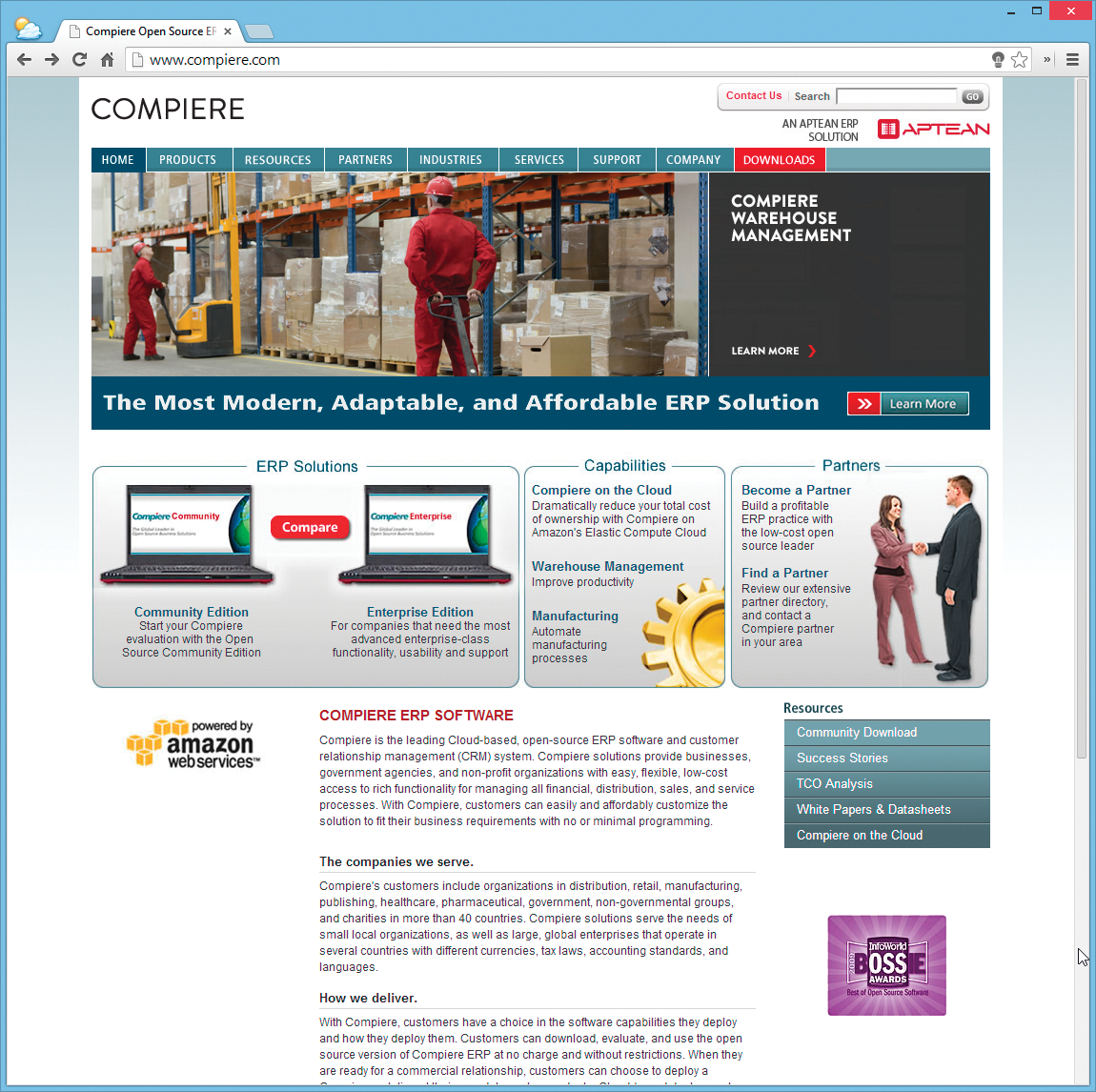
With Compiere, Aptean addresses small to medium-sized businesses that require particular flexibility in an ERP software. Compiere focuses on business processes rather than on organizational structures and is highly suitable for use in modern, agile, medium-sized companies (large corporations are typically happy with rigid organizational structures and a lower degree of flexibility). Incidentally, the word "compiere" comes from Italian and means to do or accomplish something.
Compiere provides multiple vertical market solutions for companies in the distribution, retail, manufacturing, and service sectors. The scope of services includes finance, management of distribution channels and production processes, calculation of the order costs/project-specific accounting, and sales via e-commerce and point of sale. The suite supports Linux and Windows. The supported databases are Oracle Standard Edition/Enterprise Edition/XE or Postgres Plus Advanced Server/EnterpriseDB. Access to Compiere applications is via a Java client (currently compatible with Java JDK 1.6/7) to allow desktop users a free choice of platform.
In the Community Edition, unfortunately, mobile users with tablets and smartphones are left out in the cold, because only the Enterprise Edition provides a browser-based user interface. Also, only Enterprise Edition users are given access to the latest bugfixes and can currently enjoy version 3.8.3 from 13 February 2014, rather than having to make do with the very outdated version 3.3 from March 2, 2009, like the users of the Community Edition.
In its turbulent history, Compiere has repeatedly changed hands. The successful and robust model-driven architecture in conjunction with the open source nature of the software have now – to the indignation of many open source developers who specialized in Compiere – opened the floodgates to countless imitators who draw heavily on concepts introduced by the pioneer of open source ERP software. Among others, the developers of the ERP systems ADempiere, Adaxa Suite, iDempiere, and Openbravo have made heavy use of the Compiere code base.
Openbravo
URL: http://openbravo.com
Strengths:
- Model-driven architecture keeps company-specific adjustments when installing updates
- Optimized for use with mobile user agents
- Preconfigured AMIs for use in the AWS cloud
- Can be extended with the help of nearly 300 modules and the open API
- Integration with Google Drive and Twitter
Weaknesses:
- Use of several modules is restricted to the commercial Professional Edition
Openbravo is a multiple award-winning ERP software with roots in a university project. Last year, the system won the InfoWorld Best of Open Source Application Award "Bossie" (Figure 5). Openbravo now boasts a user community of some 16,000 administrators, including thousands of developers, and an installed base of about 6,500 ERP system environments.
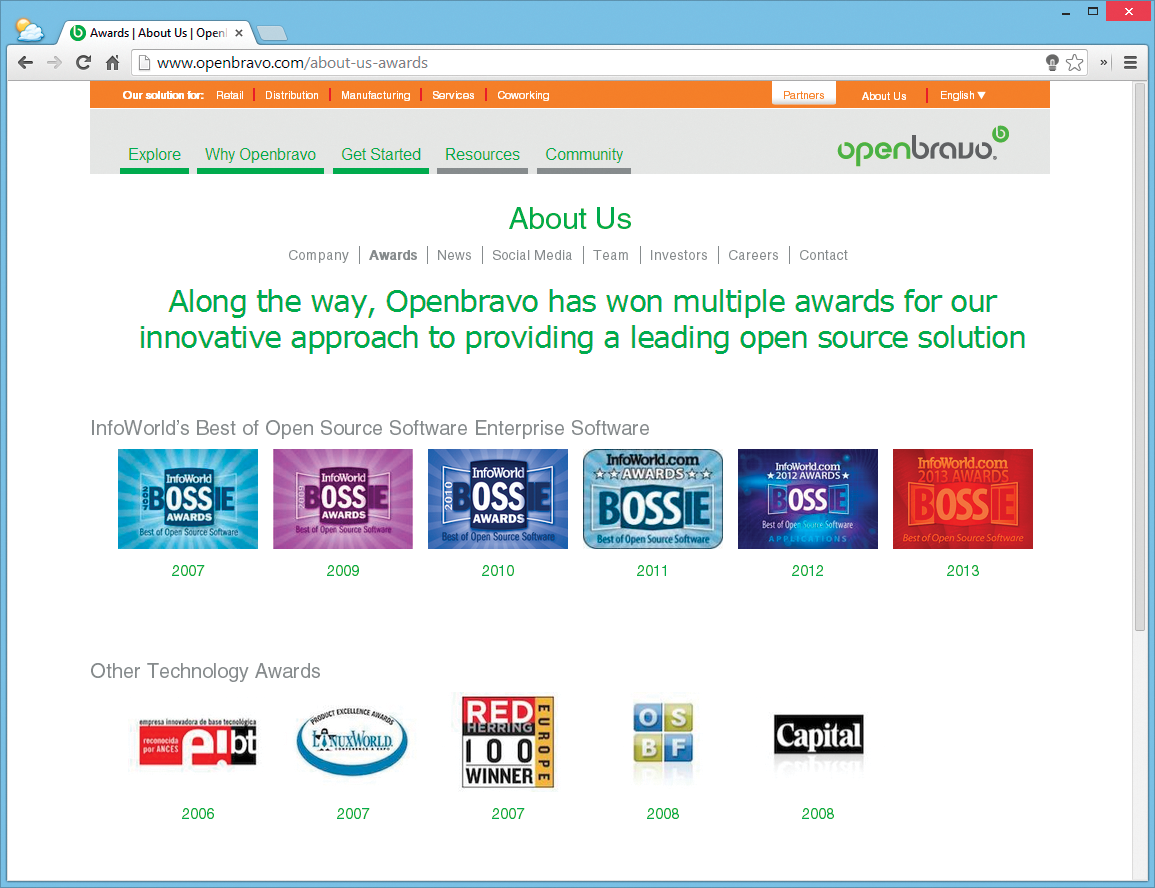
Openbravo is a Java-based solution with a model-driven architecture that profoundly borrows from Compiere. Much like Compiere, Openbravo also keeps company-specific modifications of a production system from version to version; an update never overwrites them.
Openbravo now covers the functionality of an ERP Suite in a fairly complete way. The basic functionality is at the core of the system; additional capabilities are relatively easy to retrofit with the help of loadable modules. In the catalog of extensions [3], featuring nearly 300 entries, open source modules are unfortunately the exception rather than the rule. Most of these solutions are proprietary and commercial, and some even require the Professional Edition of Openbravo.
Thanks to the open API, the system is expandable. The developers focus on agility, mobility, and cloud support. It is not just that the user interface of the Mobile Edition of Openbravo is based on HTML5, it is also touch-enabled and runs in an ordinary mobile web browser. Using a framework like PhoneGap allows the Openbravo mobile front end to be packaged as a mobile app.
The excellent usability of the browser-based Openbravo GUI offers users great flexibility. If users have incomplete data, they can navigate between different tabs and browser windows and continue their work without losing form input (Figure 6).
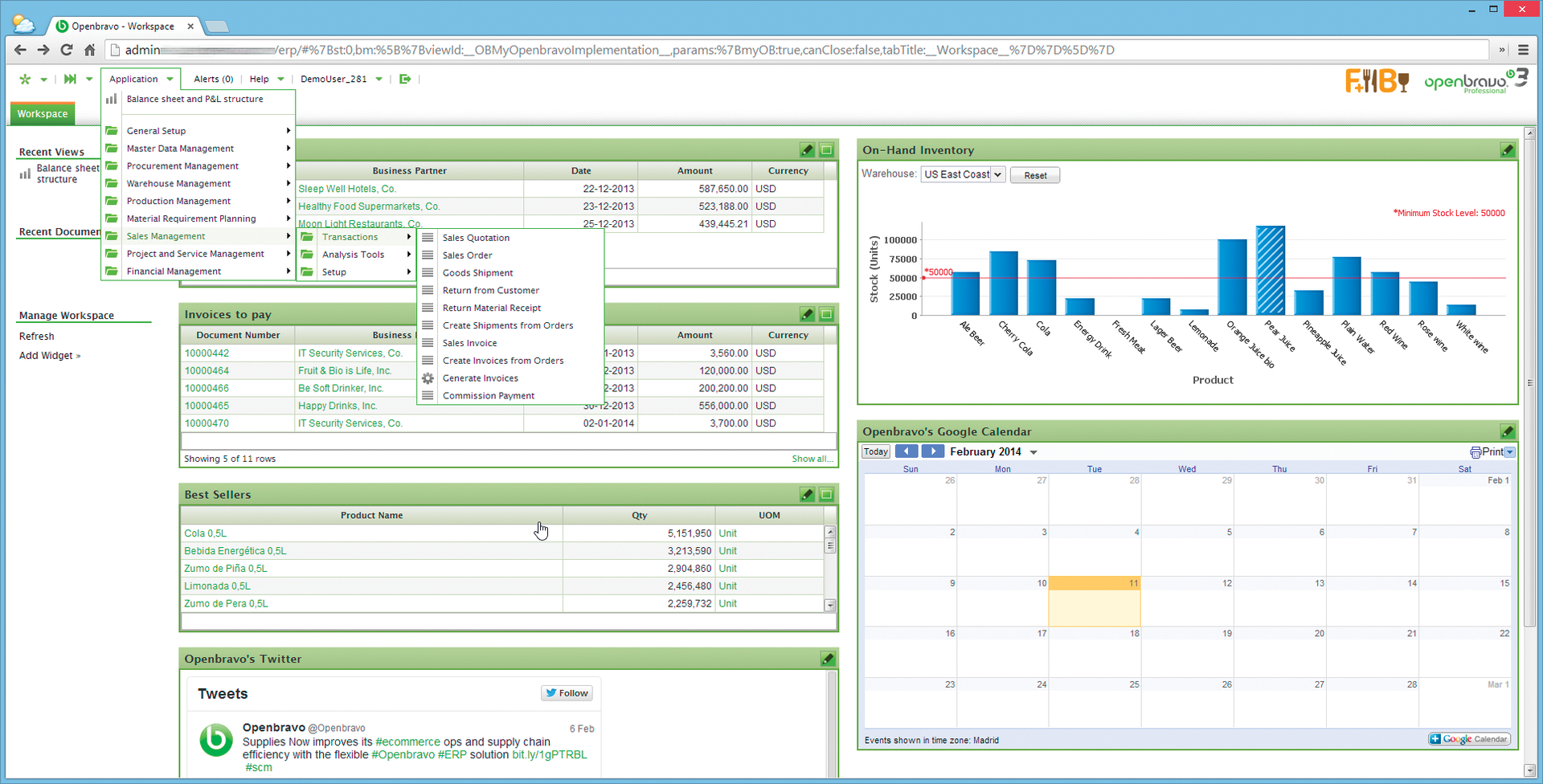
Stephen Schober, the CEO and managing director of Metal Supermarkets, who uses Openbravo and provides it to his concession partners, said: "Openbravo turned out to be the best of the 80 solutions that our project team investigated. We were particularly impressed by the high degree of flexibility with regard to the setup (system and user environment), language localization, tax rules, and data management." Visual Governance, another North American user of Openbravo, can even quantify the benefits of implementing the ERP system: Thus far, the solution provider for compliance solutions has been able to save 40 percent of its administrative time and cost overhead.
Openbravo is represented on AWS with official AMIs [4] based on Ubuntu Linux or Openbravo appliances in four regions (including one in the EU). Most active users (99.9 percent) of Openbravo manage without any commercial support (Figure 7). Only 0.1 percent use commercial features and services. Openbravo is one of the few open source CRMs that can compete with the three commercial top dogs.
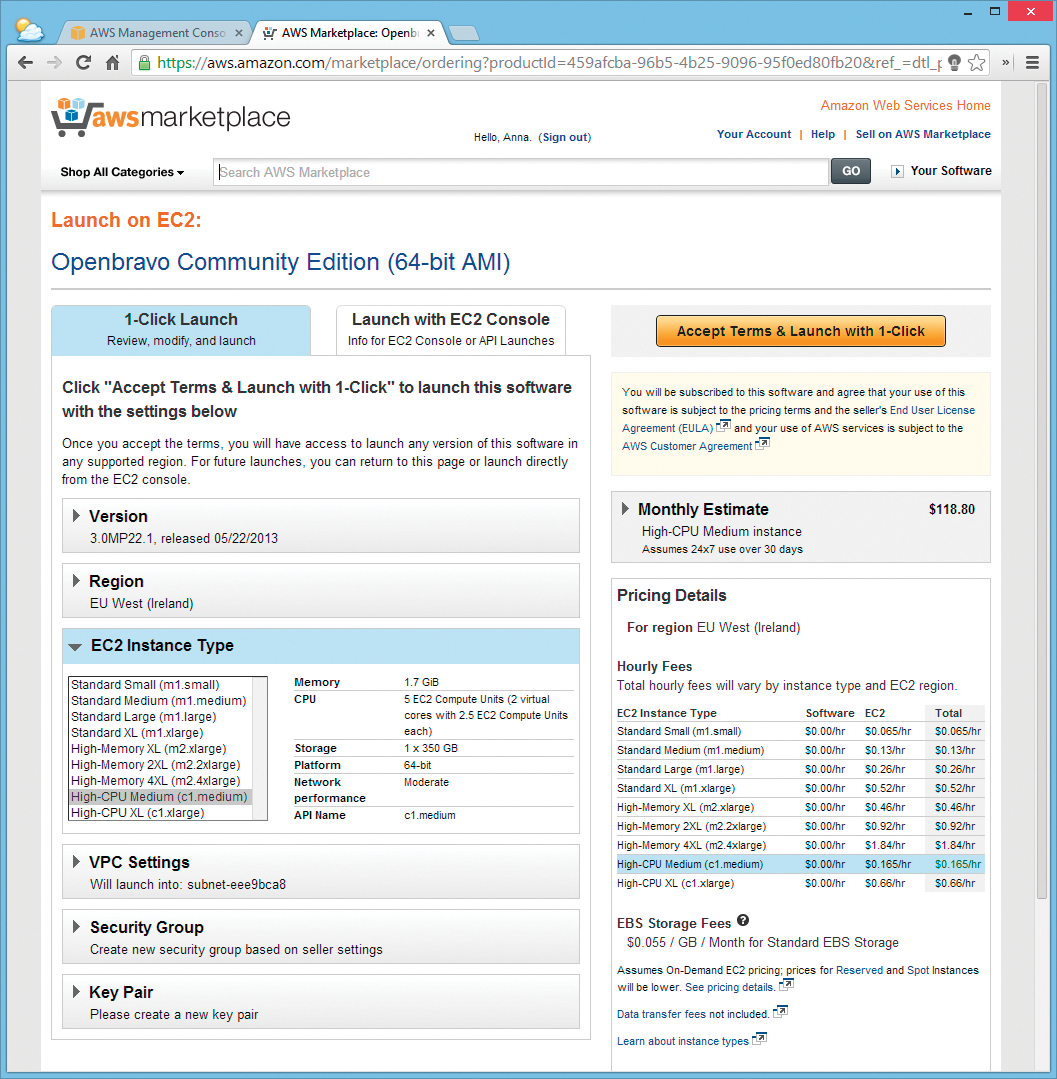
xTuple ERP PostBooks Edition (previously OpenMFG)
URL: http://www.xtuple.com/get-xtuple-erp
Strengths:
- Manufacturing-oriented product
- Good process and manufacturing flow
- Strong reseller and developer community
- Available for Windows, Linux, BSD, and Mac OS X
Weaknesses:
- Extensions and modules can cost several thousand dollars
- The extensive technical PDF documentation is unfortunately not free of charge
- Useful functions for international trade only in the commercial version
The xTuple ERP PostBooks Edition is a very functional ERP/CRM system for SMEs in the manufacturing industry that features integrated accounting. The commercial editions include a production management system with built-in support for billing in multiple currencies, multilingual localization packages, and adaptable taxation rules (Figure 8).

The software first emerged under the name "OpenMFG" as a solution to a specific problem for a specific client, Cedarlane Natural Foods Inc., and was distributed for a time under a commercial license. Cedarlane is a supplier to supermarkets in the United States and Canada and thus optimized the ERP and CRM software for its own requirements. A positive side effect of this development is that OpenMFG gained a flexible electronic data exchange interface and powerful price- and cost-controlling tools.
The system supports the manufacturing of products both for stock and for delivery to order and was developed in line with the APICS standards. It uses PostgreSQL, the Qt framework for C++, and the REST API. Unfortunately, the prices of what are otherwise interesting extensions, as well as the prices of the specialist commercial editions, are quite high and therefore unrealistic. The lack of an open API has led to a lack of third-party solutions, which seems to be bringing about the slow extinction of the entire ecosystem. This is definitely not in the spirit of open source.
SugarCRM
URL: http://sugarcrm.com
Strengths:
- Very extensive scope of commercial editions
- A high degree of interoperability
- Support for mobile devices with a mobile app
- Available as a SaaS solution
Weaknesses:
- Restricted functionality of the Community Edition
SugarCRM is a system for customer support, which now boasts a total of 10 million downloads (including extensions) and a million-strong community of active users in 192 countries (Figure 9).
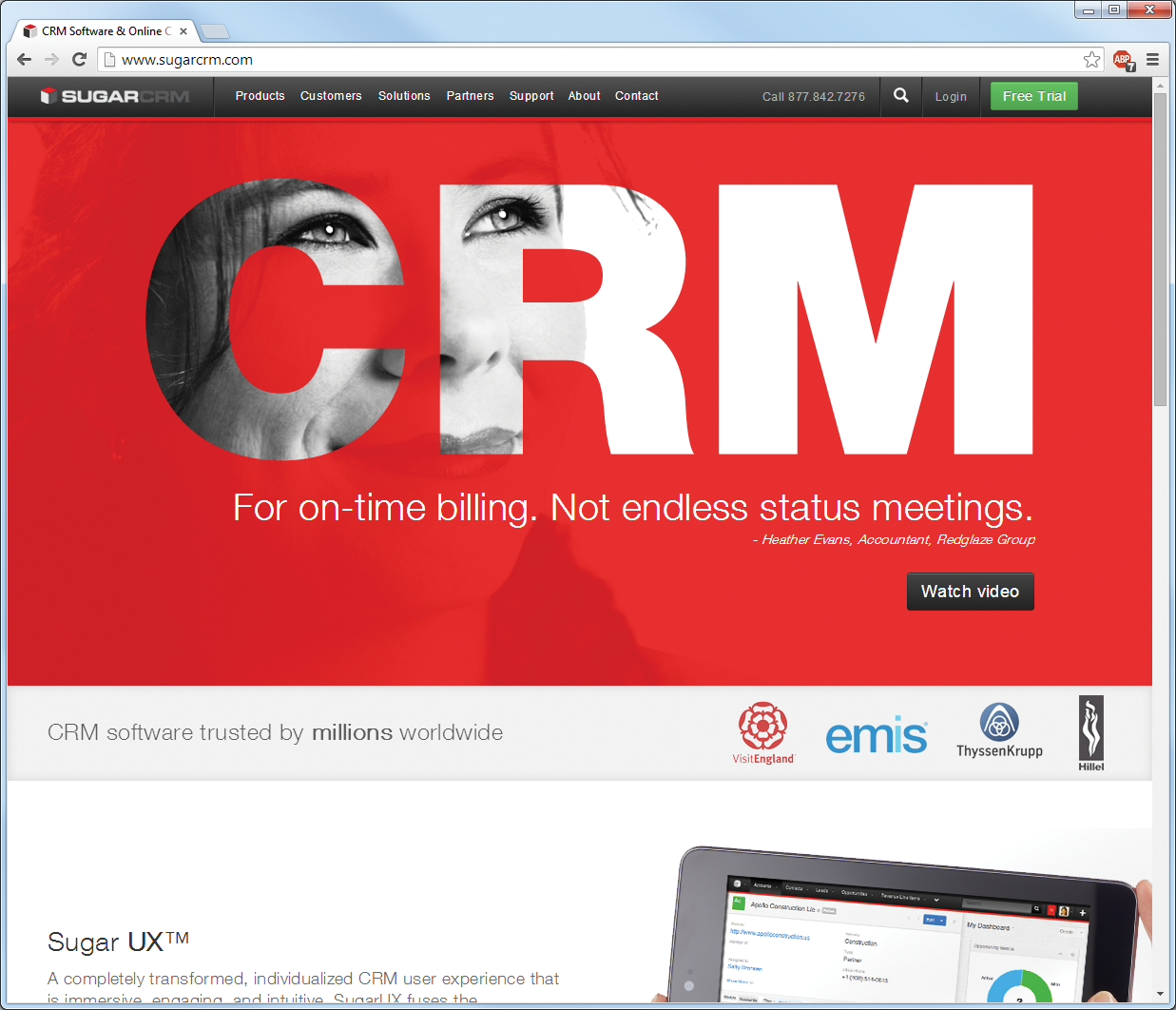
SugarCRM exists as a free Community Edition and three commercial versions: Sugar Professional (from US$ 35 per user and month), Sugar Enterprise (from US$ 60 per user and month), and Sugar Ultimate (from US$ 150 per user and month). A company with 100 employees, pays between US$ 42,000 (Sugar Professional) and US$ 180,000 (Sugar Ultimate) in license costs each year in advance; monthly payments are not available, nor is there an option for adding or dropping licenses if you expand or reduce your workforce.
The most relevant differences in the scope of these three editions relate to support for the Oracle database and DB2, SQL reporting, customized activity streams (only available in the Enterprise and Ultimate editions), product-specific sales forecasts and management for individual items in potential business deals, and the Self-Service Portal for customers (Figure 10). The Sugar Private Cloud is part of the scope of the Ultimate Edition and can be added to the Enterprise Edition as a commercial extension.

In contrast, the Community Edition is greatly restricted in its feature set – to prompt administrators to opt for the commercial editions. If you seriously want to use SugarCRM in a production environment, there is no alternative to one of the commercial editions.
Many paying customers seem to be satisfied. "The great feature set, the options for integration with external systems, the flexible hosting options as a cloud or on-demand variant, and last but not least, the price of Sugar fully convinced us," says Alexander Lott, Managing Director of Lott GmbH. "Within six months, our company moved from no CRM solution to a solution used and integrated in all branches," says Alexandre Lacour, Managing Director of SOMEFLU. Hello AG from Munich ramped up its system within just three weeks.
The heavily restricted functionality of the Community Edition contradicts the open source philosophy of the free availability of free source code, including complete documentation. People who abuse open source as a marketing ploy must expect the developer community to distance itself from the project in the long run. Therefore, it's not surprising that SugarCRM announced in February of this year that it wants to discontinue development of the Community Edition of the system.
John Roberts, one of the founders of SugarCRM, has now launched a new open source CRM system called X2Engine. The new system is based on the same business model as SugarCRM previously had: an open source edition with a heavily restricted feature set and two commercial editions [5]. Additionally, if you want more control over your CRM system, try SuiteCRM [6], which is a fork of SugarCRM Professional and offers a free and fully open source alternative to the commercial SugarCRM Professional Edition (Figure 11).
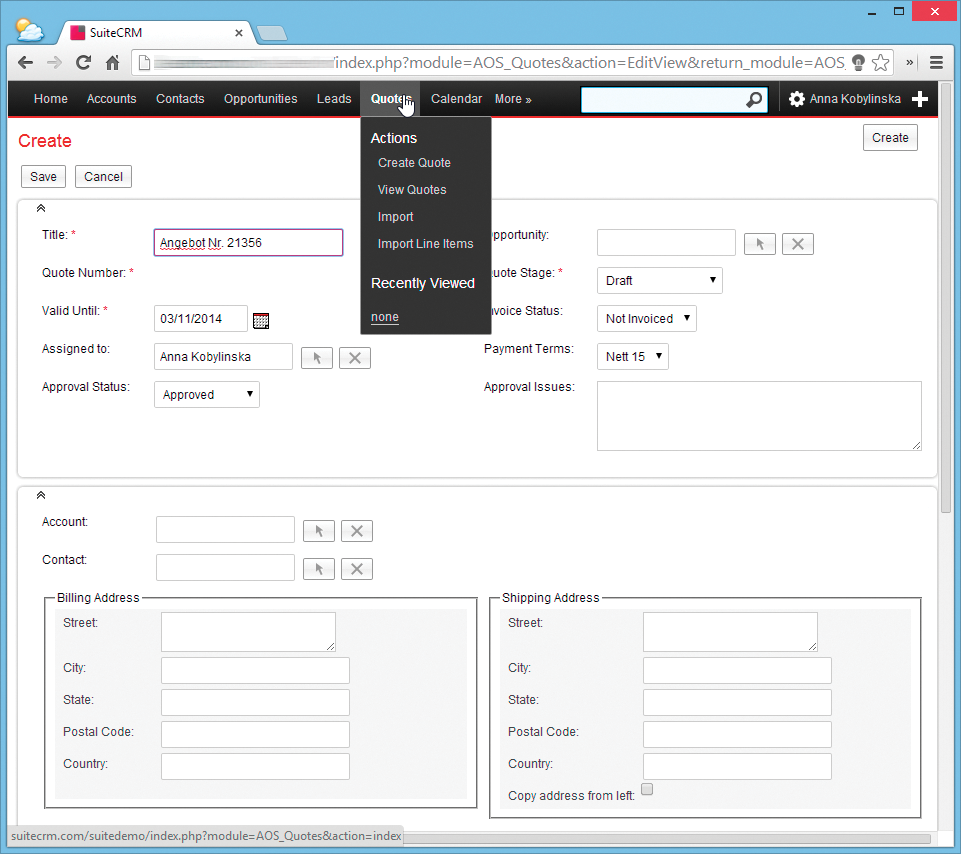
Conclusions
When choosing an ERP/CRM system, the feature scope and three other important criteria play a central role: scalability, vendor lock-in, and interoperability.
ERP/CRM solutions that deserve the term "professional" have almost exclusively been commercial in the past. Companies who were not willing to invest in a commercial ERP system were sidelined; only in the rarest of cases did developing an open source solution with the required functionality prove genuinely practical.
The users of a proprietary ERP solution have to accept critical limitations: They have to tolerate vendor lock-in and lack of interoperability. Errors in evaluation or implementation of such a critical IT system as ERP software can have catastrophic consequences for the company concerned. Companies who identify the weaknesses in their choice of a proprietary solution too late already have their data locked in. Unfortunately, at that point, there is often no meaningful way of turning back, given the high costs.
Fortunately, the rapid pace of innovation has produced a variety of alternatives in recent years in the open source ERP/CRM sector. Open source solutions offer the enterprise plenty of scope for testing and extending the available feature set.
Commercial licenses and proprietary software do not give users any options for modifying the acquired solution to suit their own needs. This aspect of an ERP solution has enormous significance for agile, medium-sized companies. The open source solutions that look particularly promising in this context are opentaps, Openbravo, and SuiteCRM (based on SugarCRM).
Providers of the leading open source ERP/CRM systems have recognized the importance of the cloud at an early stage and put their money on AWS. The availability of turnkey EC2 instances not only gives admins the opportunity to take the short-listed solutions for a test drive but also means they scale on demand. Companies can combine their open source ERP/CRM systems with the high scalability and performance of the cloud, without the long-term commitment to a supplier or the financial burden of licensing costs for several years. A company can set up a needs-driven ERP/CRM system that suits its own requirement profile, independent of company size.
